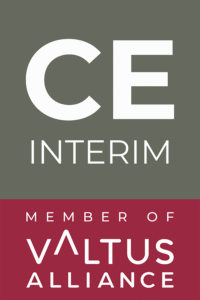Vous n'avez pas le temps de lire l'article en entier ? Écoutez le résumé en 2 minutes.
Une mission d'intérim réussie consiste à définir les critères et les résultats clés que le manager de transition a obtenus pour l'organisation cliente.
Chez CE Interim, nous fournissons des managers intérimaires de haut niveau qui fournissent résultats et valeur.
Une mission d'intérim est une mission de courte durée dans le cadre de laquelle un professionnel expérimenté (le manager de transition) est chargé de gérer un projet, de gérer une crise, de combler une lacune en matière de leadership ou de conduire un changement important au sein de l'organisation.
Les experts de CE Interim peuvent vous aider à relever ces défis.
Qu'est-ce qu'une mission intérimaire ?
Une mission intérimaire est une mission ou un projet à court terme visant à obtenir des résultats spécifiques dans un délai défini. Elle permet aux organisations de répondre à des besoins urgents ou d'opérer une transition sans engagement à long terme. Ces missions sont menées par des professionnels expérimentés possédant les compétences requises pour le poste.
Par exemple, une entreprise peut faire appel à un CFO intérimaire pour stabiliser les finances lors d'une fusion ou un expert en informatique pour gérer une cyber-faille. Qu'il s'agisse de gérer un projet, de traverser une crise ou de mettre en œuvre un changement stratégique, les missions intérimaires offrent la flexibilité et l'expertise nécessaires pour obtenir des résultats critiques rapidement et efficacement.
Pourquoi définir une mission intérimaire réussie ?
La définition d'une mission intérimaire réussie est la clé de l'excellence organisationnelle et de la réussite à long terme. En définissant les critères clés, vous pourrez vous orienter plus facilement.
i) Performance de l'organisation
La définition d'une mission intérimaire réussie a un impact important sur les performances de l'organisation. Lorsque le succès est défini :
- Augmente la productivité globale en donnant à chacun une direction claire à suivre.
- Stimule le moral et la concentration de l'équipe en fixant des objectifs réalisables pour motiver et engager les employés.
- Aligne la stratégie sur les objectifs afin que tous les efforts contribuent à la vision et aux objectifs à long terme de l'organisation.
ii) Avantages de la définition de critères de réussite
La mise en place de critères de réussite vous permet
- Il vous donne des objectifs mesurables qui vous permettent de suivre les progrès réalisés et de les ajuster si nécessaire.
- Aide à la prise de décision en fournissant des données et des indicateurs clairs de réussite.
- Il garantit la responsabilité et la transparence afin que vous puissiez identifier les responsables et avoir une communication ouverte.
iii) Prestations complémentaires
La définition d'une mission intérimaire réussie ne se limite pas à une amélioration immédiate des performances :
- Simplifie la communication afin que les membres de l'équipe puissent comprendre les attentes et travailler ensemble plus efficacement.
- Identifie les domaines à améliorer afin que vous puissiez vous développer et vous adapter.
- Renforce la confiance des parties prenantes, car des critères de réussite clairs montrent que vous vous engagez à atteindre vos objectifs.
Mesures clés de la réussite
1) Fixer des objectifs et des buts clairs
La définition d'objectifs clairs est la clé du succès pour toute organisation. La base de cette démarche est Objectifs SMART: Spécifique, Mesurable, Atteignable, Pertinent et Temporel. Ces critères garantissent que les objectifs sont clairs, traçables, réalistes, alignés sur la stratégie globale et assortis d'un calendrier.
I) Étapes de la définition des objectifs :
a) Quels sont les objectifs de l'organisation ?
- Évaluer les performances actuelles.
- Comprendre les aspirations futures.
- Consulter les principales parties prenantes.
Les entreprises peuvent ainsi identifier les domaines spécifiques à améliorer et fixer des objectifs mesurables.
b) Exemple d'objectif SMART : Une entreprise peut se fixer comme objectif intermédiaire d'augmenter ses ventes en ligne de 15% en 6 mois. Cet objectif est le suivant :
- Spécifique : Augmenter les ventes en ligne.
- Mesurable : 15%.
- Réalisable : Sur la base d'une étude de marché.
- Pertinent : Pour la croissance globale de l'entreprise.
En reliant ces objectifs à la stratégie globale, les entreprises peuvent progresser et conserver leur élan.
2) Intégration et adaptation rapides
I) Le rôle de l'intégration rapide
a) Culture et processus de l'entreprise :
- Une intégration rapide dans une nouvelle entreprise est la clé du succès. Apprendre à connaître la culture d'entreprise, les valeurs, les styles de communication et les flux de travail signifie une transition plus douce et un alignement sur les objectifs de l'entreprise.
b) Stratégies d'intégration :
- Une formation complète, un mentorat, des listes de contrôle pour l'intégration et l'accès aux membres clés de l'équipe garantissent une transition en douceur. Des sessions régulières de contrôle et de retour d'information au cours des premières semaines permettent de résoudre les problèmes éventuels.
II) Obtenir un impact immédiat
a) Tirer parti de l'expertise pour apporter rapidement de la valeur :
- Les managers de transition peuvent obtenir des résultats immédiats en appliquant leur expertise. En identifiant les domaines dans lesquels ils peuvent appliquer leurs compétences, ils obtiennent des résultats rapides, par exemple en analysant les processus, en suggérant des améliorations ou en s'attaquant à des projets clés.
b) Exemples d'actions et de décisions immédiates :
- Par exemple, un manager de transition qui aide une entreprise à traverser une crise, à intégrer des opérations après une fusion ou à délocaliser une usine montre son expertise et crée un climat de confiance avec ses collègues. En se concentrant sur l'intégration et l'adaptation rapides, on tire le meilleur parti des managers de transition et on les fait travailler dès le premier jour.
3) Respecter les étapes clés
Le respect des étapes est la clé de tout projet. Chez CE Interim Services, nous savons que les jalons permettent de suivre les progrès, de respecter les délais et de maintenir l'élan. Voici pourquoi le suivi des étapes est important, les outils et les techniques de suivi des progrès et les stratégies pour respecter les délais.
I) Suivi des progrès grâce à des jalons
a) Pourquoi le suivi des étapes :
- Le suivi des étapes permet d'établir un plan clair, d'indiquer les tâches et les délais. La fixation de jalons permet aux équipes de se concentrer sur les objectifs à court terme, d'identifier les blocages potentiels et d'assurer le succès à long terme. CE Interim Services sait fixer et respecter les étapes.
b) Outils et techniques de suivi des progrès :
- Le suivi des progrès nécessite les bons outils. Les logiciels de gestion de projet tels que Trello, Asana et Microsoft Project indiquent les étapes et les échéances. Les diagrammes de Gantt et les tableaux Kanban fournissent des échéances visuelles permettant de suivre et d'ajuster les plans.
II) Dates des réunions et résultats attendus
a) Respect des délais :
- Des étapes clés garantissent une livraison dans les délais. En divisant le projet en plusieurs parties, les équipes peuvent se concentrer sur la livraison de chaque phase dans les délais impartis. Des réunions régulières sur l'état d'avancement du projet et des rapports d'avancement permettent de responsabiliser tout le monde. CE Interim Services respecte les délais et se concentre sur les phases.
b) Études de cas :
- Les projets réussis fixent des étapes réalistes, communiquent ouvertement et s'adaptent au changement. Ces études de cas vous donneront un aperçu du suivi des étapes. Chez CE Interim Services, nous sommes fiers de l'achèvement de nos projets et de notre expertise en matière de gestion des étapes.
4) Améliorations opérationnelles pour plus d'efficacité
I) Efficacité et processus
a) Trouver des domaines d'amélioration opérationnelle :
- Pour rester compétitives, les entreprises doivent continuellement trouver des domaines d'amélioration opérationnelle. Cela implique de mener des audits approfondis pour trouver les inefficacités et les blocages dans les processus actuels. Les managers de transition de CE Interim peuvent aider à analyser les modèles de flux de travail, à recueillir les commentaires des employés et à examiner les données opérationnelles pour trouver ces domaines.
b) Amélioration des processus :
- Une fois que les domaines d'amélioration sont identifiés, il est crucial de mettre en œuvre des améliorations de processus ciblées. CE Interim peut aider à introduire de nouvelles technologies, à affiner les flux de travail et à réaffecter les ressources pour augmenter la productivité. Nos managers intérimaires organisent également des sessions de formation régulières pour s'assurer que les employés s'adaptent aux changements et à l'efficacité opérationnelle globale.
II) Résolution de problèmes
a) Fixer et résoudre les problèmes fondamentaux :
- La résolution des problèmes est la clé de l'amélioration opérationnelle. CE Interim utilise une approche structurée pour résoudre les problèmes fondamentaux par le biais d'une analyse des causes profondes et de solutions stratégiques afin de résoudre les problèmes pour de bon.
b) Exemples de défis opérationnels et de solutions :
Les défis opérationnels diffèrent d'un secteur à l'autre. L'expertise de CE Interim couvre plusieurs secteurs et nous avons donc des solutions pour des problèmes spécifiques :
- Fabrication : Retards de production ou pannes d'équipement grâce à des programmes d'entretien préventif et à une production allégée.
- Secteur des services : Goulets d'étranglement dans le service à la clientèle grâce à l'intégration de systèmes avancés de gestion de la relation client (CRM) et de programmes de formation du personnel.
En se concentrant sur ces améliorations opérationnelles et en utilisant la gestion intérimaire de CE Interim lorsque cela est nécessaire, les entreprises peuvent augmenter leur efficacité et leurs processus et se développer pour de bon.
5) Impact financier : Réduction des coûts et augmentation des recettes
I) Gestion des coûts et des ressources
a) Stratégies de gestion du budget et des ressources :
- Des objectifs financiers clairs : Aligner les objectifs financiers à court et à long terme sur les objectifs de l'entreprise.
- Révision régulière du budget : Réviser régulièrement le budget afin de réduire les coûts sans compromettre la qualité.
- Technologie : Utiliser un logiciel pour le suivi du budget et l'allocation des ressources.
b) Exemples réels de réduction des coûts :
- Automatisation des processus : Une entreprise manufacturière a automatisé certains processus pour réduire les coûts de main-d'œuvre.
- Efficacité énergétique : Un complexe de bureaux a installé des systèmes à haut rendement énergétique et a réduit ses factures de services publics de 20%.
II) Stimuler la croissance des recettes
a) Initiatives pour la croissance des revenus :
- Diversification des produits : Introduire de nouveaux produits ou services pour de nouveaux marchés.
- Expansion du marché : Utilisez le marketing numérique pour atteindre davantage de clients.
- Fidélisation de la clientèle : Mettre en place des programmes de fidélité pour fidéliser les clients.
b) Études de cas sur l'impact financier des missions intérimaires :
- Projet d'optimisation des ventes: Les ventes d'une chaîne de magasins ont augmenté de 15% en six mois avec un manager intérimaire.
- Audit d'efficacité: Un directeur financier intérimaire a aidé une startup technologique à réduire ses dépenses mensuelles de 10%.
L'équilibre entre la gestion des coûts et la croissance des recettes permet d'obtenir un impact financier durable.
6) Satisfaction des parties prenantes
I) Importance du retour d'information de la part des clients
a) Collecte et analyse du retour d'information :
- La collecte et l'analyse du retour d'information de la part des principales parties prenantes sont essentielles pour toute entreprise qui souhaite réussir à long terme. En recherchant le retour d'information des clients, les entreprises peuvent se faire une idée de leurs performances et des domaines à améliorer. L'analyse de ce retour d'information permet de mettre en évidence des tendances et des modèles qui peuvent servir de base à la stratégie.
b) Méthodes de collecte du retour d'information :
Il existe de nombreuses façons de recueillir un retour d'information :
- Enquêtes et questionnaires : Envoyer des enquêtes aux clients après un projet pour obtenir un retour d'information détaillé.
- Entretiens et groupes de discussion : Organisez des entretiens ou des groupes de discussion pour obtenir un retour d'information approfondi.
- Critiques en ligne et médias sociaux : Surveillez les avis en ligne et les médias sociaux pour obtenir un retour d'information en temps réel.
II) Préoccupations des parties prenantes
a) Stratégies de satisfaction :
Répondre rapidement et efficacement aux préoccupations des parties prenantes est la clé de la satisfaction. Les stratégies comprennent :
- Une communication réactive: Maintenir des canaux de communication ouverts et transparents.
- Mise en œuvre des changements: Agir en fonction du retour d'information en mettant en œuvre les changements et les améliorations nécessaires.
- Mises à jour régulières: Tenir les parties prenantes informées des progrès et des changements apportés en réponse à leurs commentaires.
En écoutant et en tenant compte du retour d'information des clients, les entreprises peuvent établir des relations plus solides, une plus grande satisfaction et une amélioration continue.
7) Transfert de connaissances et héritage
I) Transfert de compétences
Le transfert de compétences est essentiel à la croissance des entreprises.
Voici comment assurer le transfert des compétences au personnel permanent :
- Formation structurée : Utilisez des ateliers, des cours en ligne et des sessions pratiques pour couvrir les compétences clés.
- Mentorat : Associez des employés expérimentés à des nouveaux venus pour partager les connaissances.
- Documentation : Conservez des dossiers détaillés sur les processus et les meilleures pratiques.
- Examens réguliers : Effectuer des contrôles réguliers des performances pour s'assurer que les compétences sont conservées.
Les avantages à long terme sont l'efficacité, la réduction des besoins en gestionnaires intérimaires et une main-d'œuvre compétente.
II) Pratiques durables
La durabilité est la clé du succès à long terme. Mettez en œuvre ces mesures :
- Intégration des systèmes : Installer des technologies à haut rendement énergétique et des pratiques durables dans la chaîne d'approvisionnement.
- Élaboration de politiques : Mettre en œuvre des politiques de recyclage, de réduction des déchets et d'achats écologiques.
- Engagement des employés : Impliquez le personnel dans le développement durable avec des ateliers, des équipes vertes et des incitations.
- Amélioration continue : Mettre régulièrement à jour les mesures de durabilité.
Des entreprises comme Google et Unilever ont adopté des pratiques durables : elles se concentrent sur les énergies renouvelables et la réduction des déchets.
En transférant les connaissances et en pratiquant la durabilité, les organisations réussiront à long terme et laisseront un héritage.
8) Adaptation culturelle et leadership
I) Adapter le style de leadership à la culture de l'entreprise
a) L'importance de l'alignement culturel
Les dirigeants qui reflètent les valeurs de l'entreprise dirigent leurs équipes et créent une culture cohérente et appréciée.
b) Comment s'intégrer culturellement
- Apprendre la culture : Comprendre la mission, les valeurs et les normes de l'organisation.
- Communiquer ouvertement : Aligner le leadership sur les attentes culturelles grâce à la transparence.
- Impliquer les employés : Les impliquer dans la prise de décision afin de valoriser leur contribution.
- Faire preuve de souplesse : Soyez ouvert au retour d'information et adaptez-vous à l'évolution de la culture.
II) Confiance et collaboration
a) Instaurer la confiance
- Soyez cohérent : Les actions prévisibles renforcent la confiance.
- Rester transparent : Un partage ouvert de l'information réduit les malentendus.
- Reconnaître les efforts : Motivation et confiance en soi.
- Fournir un soutien : Fournir les ressources nécessaires à la croissance.
En résumé, les dirigeants qui sont culturellement alignés et qui instaurent la confiance connaîtront le succès à long terme.
9) Évaluation post-mission
I) Évaluer l'impact de la mission
a) Outils et méthodes
Utiliser des enquêtes, des entretiens, des analyses de données et des mesures de performance pour évaluer l'impact de la mission.
b) Mesurer l'impact à long terme
Suivre les indicateurs clés de performance (ICP) dans le temps au moyen d'études longitudinales et de suivis afin d'évaluer les améliorations ou les problèmes durables.
II) Documentation des enseignements tirés
a) Importance
Documenter les succès et les échecs en vue d'une amélioration continue et pour éviter de répéter les erreurs.
b) Application
Utiliser les connaissances acquises pour développer les meilleures pratiques, affiner les processus et améliorer la formation, en encourageant une culture de l'excellence et de l'adaptabilité.
Conclusion
La définition d'une mission intérimaire réussie nécessite une approche à multiples facettes, incluant l'impact financier, la satisfaction des parties prenantes, le transfert de connaissances, la durabilité et l'alignement culturel. Chacune de ces composantes est essentielle à la réussite à long terme.
CE Interim Services excelle dans la gestion de ces missions complexes avec expertise. Nos professionnels chevronnés vont au-delà des attentes des clients grâce à une planification stratégique et une exécution sur mesure. Nous veillons à ce que votre mission d'intérim relève des défis uniques, produise des résultats immédiats et favorise l'amélioration continue.
Faites confiance à CE Interim Services pour gérer les complexités de la gestion intérimaire et produire un impact durable pour le succès futur de votre organisation.





